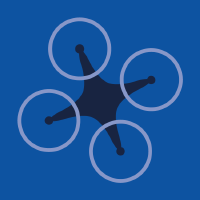Topic Menu
► Topic MenuTopic Editors




Individual Tree Detection (ITD) and Its Applications
Topic Information
Dear Colleagues,
Over the past couple of years, applications of individual tree detection (ITD) have become prevalent in numerous sectors, including forestry, biodiversity conservation, sustainability, land-use–land-cover change, climate change mitigation, and water management. One major catalyst for this trend was the proliferation of low-cost unmanned aerial vehicles (UAVs), along with advanced machine learning algorithms, that made ITD at multiple scales possible with high accuracy. Nonetheless, further research is required to explore several unexplored areas, such as the extraction of forest attributes from dense forest canopy structures, biomass mapping in arid environments, the development of transferrable ITD algorithms, and the detection of species-specific ITD paradigms, as well as the detection of mangrove distribution and the establishment of long-term databases that allow seasonality studies. This is a multidisciplinary topic with a focus on ITD, and this Topic intends to publish research, perspectives, or review articles that promote and support advancements in remote sensing applications dealing with tree-level research activities. The areas of interest include but are not limited to:
- Tree-level attributes estimation and characterization;
- Three-dimensional (3D) forest structure analysis;
- Development of novel ITD algorithms;
- Biomass modeling and validation;
- ITD using different remotely sensed data types;
- Machine learning and deep learning applications for ITD;
- Exploring UAV-LiDAR (light detection and ranging) and data fusion approaches.
Dr. Ana Paula Dalla Corte
Dr. Midhun (Mikey) Mohan
Dr. Meshal M. Abdullah
Dr. Ewane Basil Ewane
Dr. Ana Novo
Topic Editors
Keywords
- forest monitoring
- forest attributes, mensuration and modeling
- individual tree crown delineation
- species classification
- biomass mapping
- 3D point clouds
- unmanned aerial vehicles
- light detection and ranging
- multispectral and hyperspectral data
- satellite remote sensing
- data fusion
- machine learning
- deep learning
Participating Journals
| Journal Name | Impact Factor | CiteScore | Launched Year | First Decision (median) | APC | |
|---|---|---|---|---|---|---|

Drones
|
4.8 | 6.1 | 2017 | 17.9 Days | CHF 2600 | Submit |

Forests
|
2.9 | 4.5 | 2010 | 16.9 Days | CHF 2600 | Submit |

Land
|
3.9 | 3.7 | 2012 | 14.8 Days | CHF 2600 | Submit |

Remote Sensing
|
5.0 | 7.9 | 2009 | 23 Days | CHF 2700 | Submit |

Sustainability
|
3.9 | 5.8 | 2009 | 18.8 Days | CHF 2400 | Submit |

MDPI Topics is cooperating with Preprints.org and has built a direct connection between MDPI journals and Preprints.org. Authors are encouraged to enjoy the benefits by posting a preprint at Preprints.org prior to publication:
- Immediately share your ideas ahead of publication and establish your research priority;
- Protect your idea from being stolen with this time-stamped preprint article;
- Enhance the exposure and impact of your research;
- Receive feedback from your peers in advance;
- Have it indexed in Web of Science (Preprint Citation Index), Google Scholar, Crossref, SHARE, PrePubMed, Scilit and Europe PMC.


